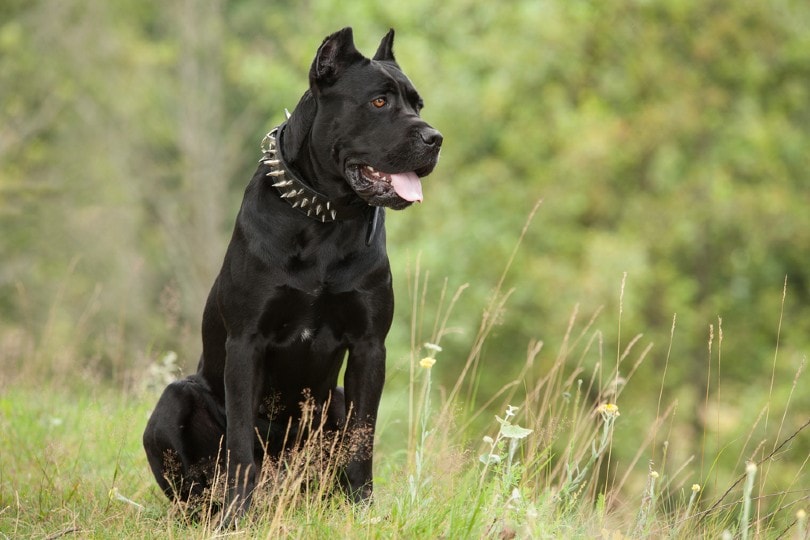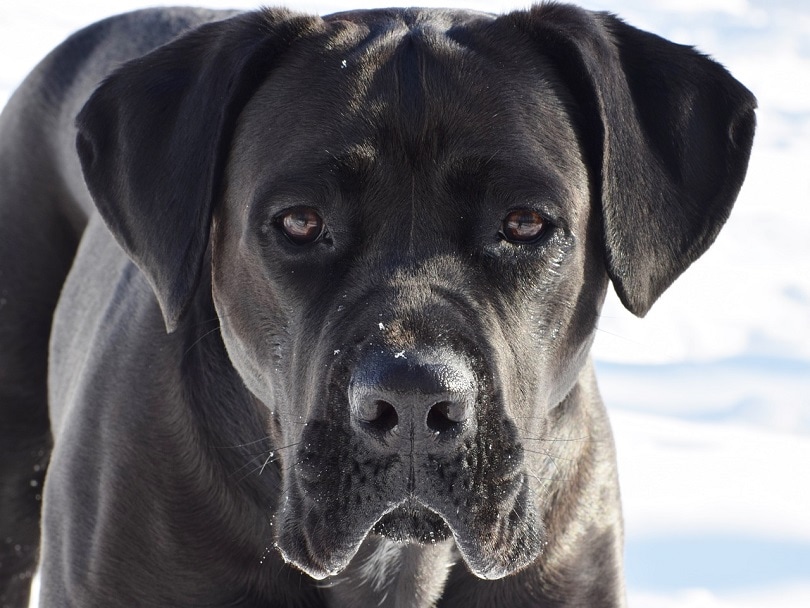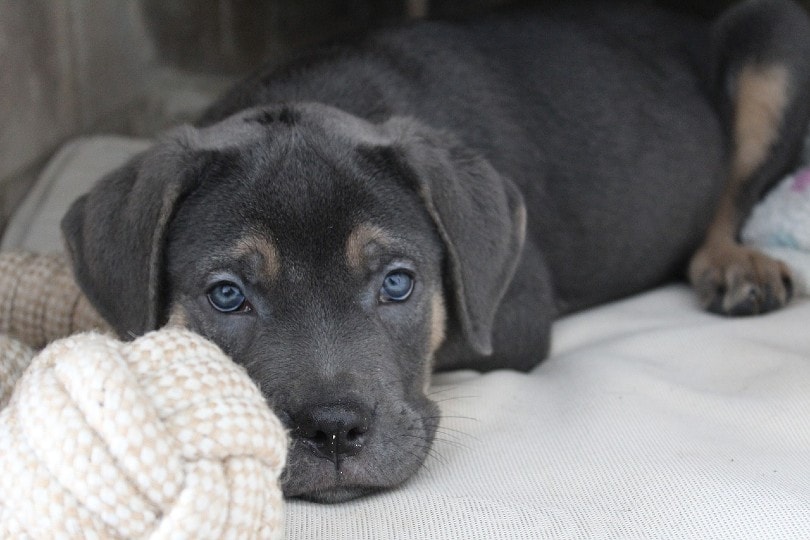The Cane Corso is a handsome, powerful dog often kept either as a companion pet or as a guard dog. Their intimidating appearance makes them look quite fearsome, but these dogs tend to be even-tempered and highly trainable dogs that show great loyalty to their people. They are even-tempered enough that some people even keep Cani Corsi as livestock guardian dogs.
Originally, these dogs were bred to hunt large game, such as wild boars, but they were also used as guardians of households and livestock. Today, they are not routinely used as hunting dogs, but many people who hunt large game do still use Cani Corsi as helpers. Early Cani Corsi and their predecessors were also used as war dogs, often carrying buckets of flaming oil into enemy lines.
Where Did Cani Corsi Originate?
The history of the Cane Corso goes all the way back to ancient Rome, making them one of the older dog breeds today. They are a variety of Mastiffs that fall under a subcategory called Molossers. It’s believed that they were bred from the Greek Molossus dog, which is extinct today. The Greek Molossus was a fearsome and fearless dog respected across the ancient world. It only makes sense that this breed would have been highly prized and bred to create more breeds containing their genetics.
As the Romans rapidly took over the ancient world, the Greek Molossus dog was brought from Greece and the Greek isles back to Rome. Once in Rome, the Greek Molossus was crossed with other Italian Mastiff breeds. The Neapolitan Mastiff is another breed that descended from crossbreeding the Greek Molossus dog and native Italian Mastiffs.

What Happened to Cani Corsi After the Fall of the Roman Empire?
When the Roman Empire began losing power, many soldiers and war dogs needed jobs that weren’t related to war and conquest. This led to the Cane Corso becoming primarily a guardian dog of both people and livestock. It was during this period that the Cane Corso was bred away from their original lumbering, slow body type and into their more modern sleek but powerful body. For centuries, the Cane Corso simply functioned as a companion and working dog, primarily in the Italian countryside.
The 20th Century and the Cane Corso
As time went on and farming moved toward more modernized functions, the Cane Corso decreased in numbers. With the implementation of better fences and ways to repel pest animals, the Cane Corso was needed as a livestock guardian far less. They were also not needed to aid in farming or hunting anymore, and the introduction of other dog breeds to the area over time also decreased the Cane Corso population. In the mid-20th century, the Cane Corso was almost functionally extinct.
Luckily, there was a small population of Cani Corsi that still existed in the Italian countryside. In the 1970s, a group of Cane Corso enthusiasts began a breeding program to save their beloved breed. By 1983, they had formed The Society of Cane Corso Lovers. In the late 20th century, these dogs began making the rounds in European dog shows. In 1988, Cani Corsi arrived in the United States, but it wasn’t until 2010 that the breed was recognized by the AKC.

Are Cani Corsi Effective Guardians?
In appearance alone, the Cane Corso easily discourages trespassers. Standing between 23.5 and 27.5 inches tall at the shoulder and weighing around 100 pounds, the Cane Corso is quite intimidating. Coupled with their dark, glossy coat, dark eyes, and typically cropped ears, there’s very little that would encourage someone up to no good to approach this dog. Not only are they large, but they are also fast and move with graceful, smooth movements.
Aside from their intimidating appearance, the Cane Corso is known to be an intelligent guardian that shows a cool and calm demeanor often compared to that of a professional bodyguard. They are highly trainable dogs that aim to please, but they can be quite stubborn. They require an experienced handler who knows how to train willful dogs. Cani Corsi should be properly socialized with other people and dogs at a young age to prevent behavioral issues from arising as they age.
In Conclusion
The Cane Corso is a wonderful dog breed, but they’re not for everyone. They can be stubborn dogs, and their powerful bodies may make them difficult to manage without proper training. Introductions to other dogs and visitors from a young age, as well as a strict training schedule, can help properly socialize your Cane Corso and ensure that your dog is well-trained and manageable. Due to their breeding background as guardian dogs, a poorly trained Cane Corso can be a problem that is difficult to handle.
Related Reads:
Featured Image Credit: Bruno Simões, Pixabay











